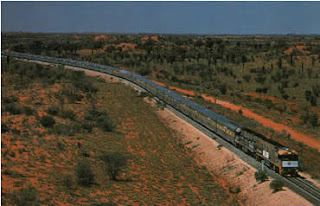
Two hundred and twenty kilometres north of Broome, located on the Dampier Peninsula, is Cape Leveque. We had planned to travel from Broome to Cape Leveque by coach stopping to have a look at the settlement of Beagle Bay, in particular the church decorated with shells including mother of pearl. On the return journey we were to fly from Cape Leveque to Broome. However after booking out of the resort at 7.00 am and waiting for some time for the coach it became obvious that there was a problem. After phone calls to Melbourne and Broome it was discovered that someone at Broome entered our trip under the wrong date and we were to be collected a month later. After another hour or two we were told that a flight would be arranged to take us to Cape Leveque after lunch. The person who eventually collected us from the hotel was sure that we would be thrilled with the new arrangement and could not understand why I was disappointed. Anyway we finally arrived at our destination mid afternoon. And what a destination it was.

The scenery at Cape Leveque is dramatic - white sand, blue sea, red cliffs, blue sky.
A small distance inland the white beach sand merges with the red desert sand. We spent many hours walking along and exploring the beaches. Whale
watching is another past-time and we saw several whales during our stay.
Our accommodation was a safari tent on a wooden platform. As well as the living space including a double bed there was an en suite and small kitchen area. On the balcony facing the sea was a barbecue for cooking dinner plus seating to relax and enjoy the view.
 |
| View from tent balcony |
At night we kept the flap opening on to the balcony open so we could watch the stars. Mosquito nets protected us from any insects. The only way to camp.
The highest point was the light house which was also the the point to go to on the unlikely possibility of a tsunami warning.
The beach on the west of the peninsula had an under-tow and swimming there was not recommended. However around the corner in a cove there is another beach which is a great swimming beach when the tide is in.
There are dramatic differences in tides in this area. At low tide it is possible to walk between tall columns of rocks which are not visible at high tide. The coastal area therefore varies at different times of the day.
Sunset over the sea was a wonderful sight.
We thoroughly enjoyed our relaxing four days at the Kooljaman Wilderness Camp. When we visited in 2006 it was theoretically possible to go on a number of organised excursions but when we made enquiries it was either assumed that we had our own transport to travel to the starting point for one activity while the advertised boating trip was not available the week we were there. We therefore explored as much of the area as we could on foot, went swimming when the tide was in and just relaxed. With such wonderful scenery what more could you ask for?
 |
| Heading inland from the camp |
When we arrived at the camp we would be notified of the time of the flight back to Broome the evening before. After lunch on the day we were due to leave we were eventually told that a plane would leave late afternoon. But then what was the hurry - we were on Broome time.
 |
| View of islands from the plane |






















































